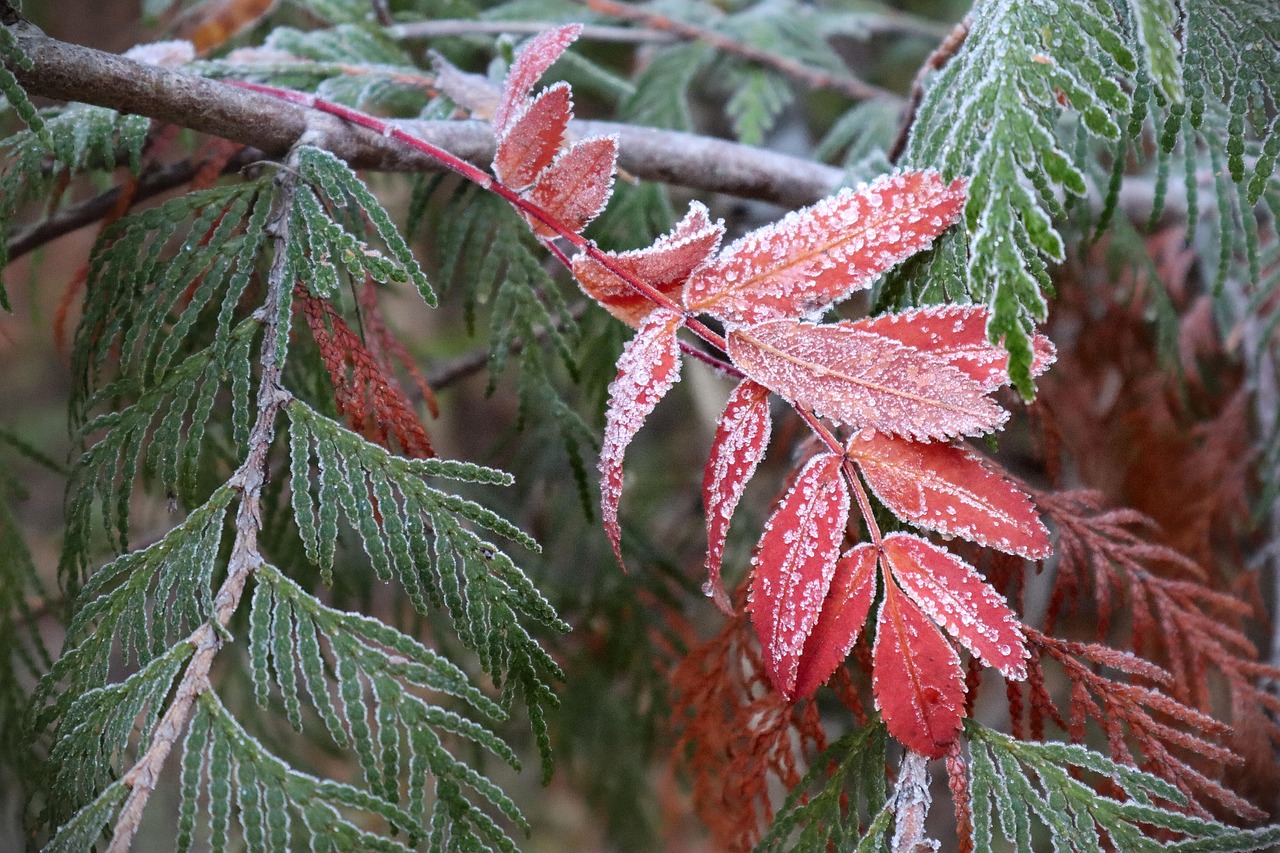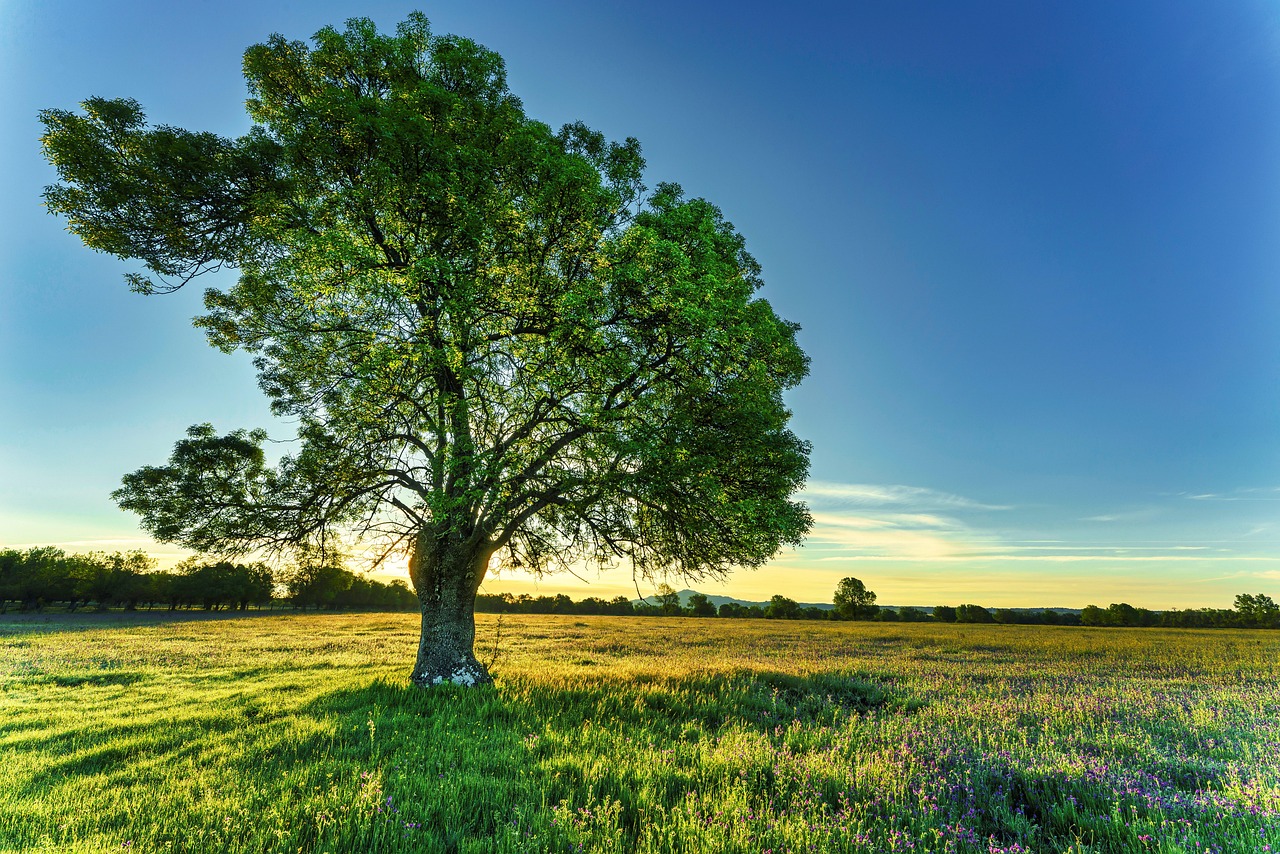The Raywood Ash tree typically exhibits a moderate growth rate, averaging 12 to 24 inches per year. This tree is known for its stunning autumn red displays, making it a popular choice for landscaping.
The Raywood Ash, also known as Fraxinus angustifolia ‘Raywood’, is a deciduous tree that belongs to the olive family. It is widely appreciated for its striking fall foliage and overall robust structure. Native to Australia, this species has become a favorite in various regions due to its adaptability and aesthetic appeal.

One of the most notable features of the Raywood Ash is its vibrant autumn colors. In fall, the leaves transform into stunning shades of red and purple, creating an impressive display that captivates many homeowners and landscapers. The tree can reach heights of 40 to 50 feet with a spread of about 30 to 40 feet, making it an excellent shade tree.
Growth Characteristics
The growth characteristics of the Raywood Ash tree are influenced by several factors including soil quality, water availability, and sunlight exposure. Understanding these factors is essential for encouraging optimal growth and achieving those beautiful autumn displays.
In ideal conditions, the Raywood Ash can grow quickly, but it is also known to thrive in less-than-perfect environments. Here are some key characteristics that define its growth:

| Growth Factor | Description |
|---|---|
| Soil Type | Prefers well-drained soils but can tolerate clay and sandy soils. |
| Water Requirements | Moderate; drought tolerant once established but benefits from consistent moisture. |
| Sunlight Needs | Thrives in full sun but can tolerate partial shade. |
| Growth Rate | Moderate; typically grows 12 to 24 inches per year. |
Another aspect of the Raywood Ash’s growth is its structure. The tree features a straight trunk and an upright form, which contributes to its appeal as a shade provider. The branches tend to grow in a symmetrical pattern, creating a balanced and aesthetically pleasing silhouette.
When planting a Raywood Ash, it is crucial to consider spacing. These trees require ample room to grow without competition from other plants. Proper spacing ensures that each tree can fully develop its canopy and maximize its visual impact during autumn.
Factors Affecting Growth Rate
The growth rate of the Raywood Ash can be affected by various environmental and biological factors. Recognizing these influences can help in planning for landscaping or forestry projects.

- Climate: The Raywood Ash prefers temperate climates. Extreme cold or heat may stunt its growth.
- Pests and Diseases: While generally resistant, infestations or diseases can hinder growth. Regular monitoring is necessary.
- Nutrient Availability: Fertile soil with adequate nutrients promotes faster growth. Consider fertilization when necessary.
- Water Management: Both overwatering and underwatering can negatively impact growth rates. Maintaining a balance is key.
In summary, the Raywood Ash tree offers an impressive growth rate under the right conditions. Its ability to adapt to various soil types and climates makes it suitable for many landscapes. By managing environmental factors effectively, you can enjoy a beautiful display of autumn colors as the tree matures.
Growing a Raywood Ash is not just about planting a tree; it is about creating a long-lasting visual centerpiece in your garden or landscape. With proper care, these trees can thrive for decades, providing beauty and shade for generations to come.
Planting and Care for Raywood Ash Trees
Proper planting and care are essential for ensuring the healthy growth of Raywood Ash trees. When planted correctly, these trees can establish a strong root system, which supports their overall development and vibrant autumn displays. Below are important guidelines for successfully planting and maintaining Raywood Ash trees.

Site Selection
Choosing the right location for your Raywood Ash tree is crucial. Here are some key factors to consider:
- Sunlight: Select a site that receives full sun, as this tree thrives in bright conditions. Aim for at least six hours of direct sunlight daily.
- Space: Ensure there is ample space for the tree to grow. The minimum distance from structures or other trees should be around 15 to 20 feet.
- Drainage: The planting site should have good drainage to prevent waterlogging, which can harm the roots.
Soil Preparation
The soil quality can significantly influence the growth rate of Raywood Ash trees. Here’s how to prepare the soil:
- Soil Testing: Conduct a soil test to determine pH and nutrient levels. Raywood Ash prefers slightly acidic to neutral soil (pH 6.0 to 7.5).
- Aeration: If the soil is compacted, aerate it to improve air circulation and water penetration.
- Amending Soil: Add organic matter such as compost or well-rotted manure to enhance soil fertility and structure.
Planting Process
Once you’ve selected the site and prepared the soil, follow these steps to plant your Raywood Ash tree:
- Digging the Hole: Dig a hole that is twice as wide as the root ball but no deeper than the root ball itself.
- Positioning the Tree: Place the tree in the center of the hole, ensuring that the top of the root ball is level with the surrounding soil.
- Backfilling: Fill the hole with soil, gently tamping it down to eliminate air pockets. Water thoroughly after planting.
Watering Regimen
Establishing a consistent watering schedule is vital for young Raywood Ash trees. Here are some tips:
- Initial Watering: Water deeply immediately after planting to help settle the soil around the roots.
- Frequency: Water once a week during dry spells. Adjust based on rainfall and temperature.
- Established Trees: Once established, Raywood Ash trees are relatively drought-tolerant but still benefit from occasional watering during prolonged dry periods.
Pest and Disease Management
Maintaining the health of your Raywood Ash tree involves monitoring for pests and diseases. While these trees are generally resilient, they can be vulnerable to certain issues.
Common Pests
Some pests that may affect Raywood Ash include:
- Ash Borers: These beetles can damage the tree’s vascular system. Look for signs such as dying leaves or thinning canopies.
- Aphids: These small insects can produce a sticky residue and lead to sooty mold. Regularly inspect leaves for clusters of aphids.
Disease Prevention
To prevent diseases, consider these practices:
- Pruning: Remove any dead or diseased branches promptly. Prune during late winter or early spring before new growth begins.
- Cultural Practices: Avoid excessive watering and ensure good air circulation by spacing trees appropriately.
Nutrient Management
A well-fertilized Raywood Ash tree will grow more vigorously and display more vibrant colors in autumn. Consider the following tips for nutrient management:
- Fertilization Schedule: Apply a balanced fertilizer in early spring before new growth appears.
- Nitrogen Needs: Focus on nitrogen-rich fertilizers to promote healthy leaf development.
- Synchronous Growth: Observe how your tree responds to fertilization and adjust accordingly for optimal results.
By following these guidelines for planting, care, pest management, and nutrient management, you can cultivate a thriving Raywood Ash tree that will showcase stunning autumn red displays for years to come.
Seasonal Care for Raywood Ash Trees
Raywood Ash trees require specific care throughout the seasons to promote optimal growth and ensure vibrant autumn foliage. Understanding the seasonal needs of the tree can lead to healthier growth and stunning displays. Below, we outline the essential care practices for each season.
Spring Care
Spring is a crucial time for Raywood Ash trees as they emerge from dormancy. Here are key practices for this season:
- Inspection: Inspect the tree for any signs of damage or disease after winter.
- Pruning: Trim any dead or damaged branches to encourage healthy growth.
- Fertilization: Apply a balanced fertilizer to support new growth. This is also the time to amend soil if necessary.
Summer Care
During the summer months, the Raywood Ash tree thrives, but it also needs careful attention to ensure its well-being.
- Watering: Maintain a consistent watering schedule, especially during dry spells. Newly planted trees may require more frequent watering.
- Pest Monitoring: Regularly check for pests like aphids and borers. Early detection can prevent significant damage.
- Mulching: Apply a layer of mulch around the base of the tree to retain moisture and regulate soil temperature.
Autumn Care
As autumn approaches, the Raywood Ash begins its transformation into a vibrant display of colors. Care during this season focuses on preparing the tree for winter.
- Leaf Cleanup: Rake fallen leaves to prevent fungal diseases that may develop in moist conditions.
- Final Fertilization: Apply a slow-release fertilizer to support root development before winter.
- Watering Adjustment: Reduce watering as rainfall increases and temperatures drop. Ensure the tree is well-hydrated before the first freeze.
winter Care
In winter, the Raywood Ash tree enters dormancy, and care focuses on protection against harsh conditions.
- Protection from Extreme Cold: If your area experiences severe cold, consider wrapping the trunk with burlap to protect it from freezing temperatures.
- Irrigation Check: Ensure that the tree received adequate moisture before the ground freezes to prevent dehydration.
- Pest Prevention: Monitor for overwintering pests and take appropriate measures to control them before spring.
Common Problems and Solutions
Like any tree, Raywood Ash can experience various issues that may affect its health and growth rate. Recognizing these problems early can help you manage them effectively.
Leaf Spotting
Leaf spotting can occur due to fungal infections. Here’s how to manage it:
- Identification: Look for brown or black spots on leaves, often surrounded by yellow halos.
- Treatment: Remove infected leaves promptly. Apply a fungicide if necessary, especially during wet seasons.
Yellowing Leaves
If your Raywood Ash has yellowing leaves, it may indicate nutrient deficiencies or water stress. Consider these solutions:
- Nutrient Check: Test soil to determine if additional nutrients are needed, particularly nitrogen.
- Watering Assessment: Ensure that the tree is receiving adequate water, especially during dry periods.
Pest Infestation
Pests like aphids and borers can significantly impact the health of your Raywood Ash. Here are some management strategies:
- Aphid Control: Use insecticidal soap or introduce beneficial insects such as ladybugs that feed on aphids.
- Borer Treatment: If borers are present, remove affected branches and apply appropriate insecticides during their active season.
Cultivating Multiple Trees
If you are considering planting multiple Raywood Ash trees, there are specific guidelines to follow for planting in groups or rows.
Spacing Guidelines
Proper spacing is crucial when planting multiple trees to ensure healthy growth and air circulation.
- Spacing Distance: Space trees at least 15 to 20 feet apart to allow their canopies room to expand.
- Row Planting: If planting in rows, maintain a minimum distance of 30 feet between rows for optimal growth and accessibility.
Aesthetic Considerations
Cultivating a row or cluster of Raywood Ash trees can enhance the visual appeal of your landscape. Consider these points:
- Symmetry: Plant trees in symmetrical arrangements for a more organized look.
- Diversity: Mix with other tree species for added visual interest while still providing enough space for each type to thrive.
Caring for Raywood Ash trees through each season and managing common problems will lead to lush, vibrant foliage and impressive autumn displays. By implementing these practices, you can create a thriving environment for these beautiful trees in your landscape.
Environmental Impact and Benefits of Raywood Ash Trees
Raywood Ash trees not only enhance the beauty of landscapes with their stunning autumn colors but also provide several environmental benefits. Understanding these benefits can further justify the decision to plant and care for this species.
Air Quality Improvement
Like all trees, Raywood Ash plays a significant role in improving air quality. They absorb carbon dioxide and release oxygen, contributing to cleaner air. Here are some specific benefits:
- Carbon Sequestration: Raywood Ash trees absorb carbon dioxide, helping to mitigate climate change by reducing greenhouse gases.
- Pollutant Filtration: The leaves of the tree trap dust, pollen, and other pollutants in the air, leading to a healthier atmosphere.
Habitat Creation
Raywood Ash trees also provide essential habitats for various wildlife species. Their dense foliage and sturdy branches offer shelter and food sources:
- Birds: The tree can attract a variety of birds that depend on its leaves for cover and its branches for nesting.
- Insects: Pollinators such as bees benefit from flowering plants that often grow near or beneath the tree.
Soil Erosion Prevention
The extensive root system of the Raywood Ash helps prevent soil erosion. By stabilizing the soil, these trees contribute to healthier landscapes:
- Root Structure: The roots bind soil together, which is crucial in areas prone to erosion, especially near waterways.
- Water Retention: The presence of trees improves water retention in the soil, leading to better hydration for surrounding plants.
Considerations for Urban Landscaping
Raywood Ash trees can be an excellent choice for urban environments. However, there are specific considerations to keep in mind when incorporating them into city landscaping:
Space Limitations
In urban settings, space can be limited. Ensure that Raywood Ash trees are planted where they have enough room to grow without interfering with buildings or power lines. Key points include:
- Root Space: Ensure adequate underground space for roots to spread without causing damage to pavement or nearby structures.
- Crown Size: Consider the mature size of the tree’s crown when planting close to buildings or other trees.
Maintenance Needs
Urban trees often require more maintenance due to environmental stressors. Here are some tips for maintaining Raywood Ash in cities:
- Irrigation Support: Provide supplemental irrigation during dry spells to ensure healthy growth.
- Pest Management: Regularly monitor for pests and diseases, as urban environments can exacerbate these issues.
Final Thoughts
The Raywood Ash tree is a remarkable specimen that offers both aesthetic beauty and environmental benefits. Its moderate growth rate allows it to adapt well in various landscapes, making it an ideal choice for homeowners and landscapers alike. With proper care, these trees not only provide stunning autumn displays but also enhance air quality, support wildlife, and prevent soil erosion.
By understanding the growth characteristics, seasonal needs, and potential issues associated with Raywood Ash trees, you can cultivate a thriving environment that showcases their beauty for years to come. Whether planted individually or in clusters, these trees contribute significantly to the overall health of urban and suburban landscapes.
Selecting the right tree species is an important decision for any landscape design. The Raywood Ash stands out not only for its vibrant colors but also for its resilience and adaptability. As you consider options for your garden or community area, keep in mind the long-term benefits of choosing a Raywood Ash tree.
In conclusion, investing in Raywood Ash trees is a commitment to creating beautiful, sustainable landscapes that benefit both people and the environment. With thoughtful planning and care, you can enjoy the majestic autumn colors and numerous advantages that come with these magnificent trees.
